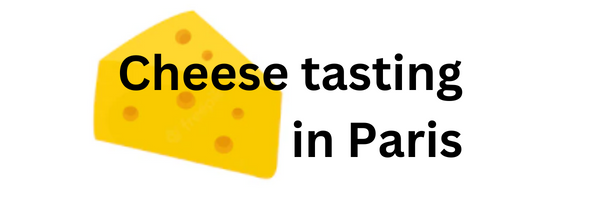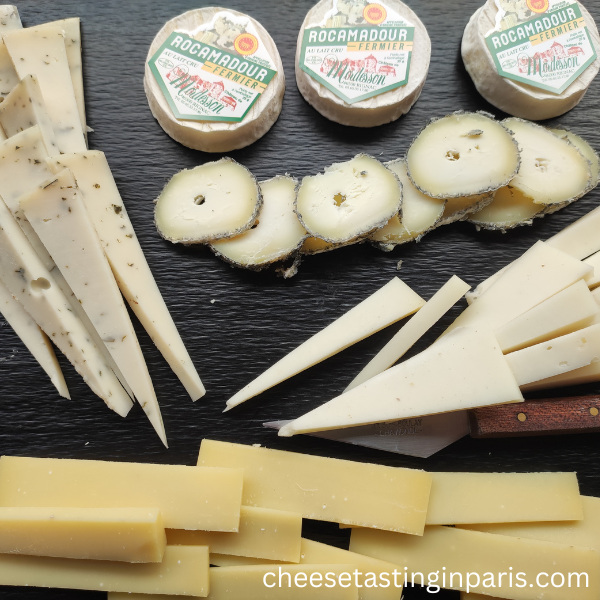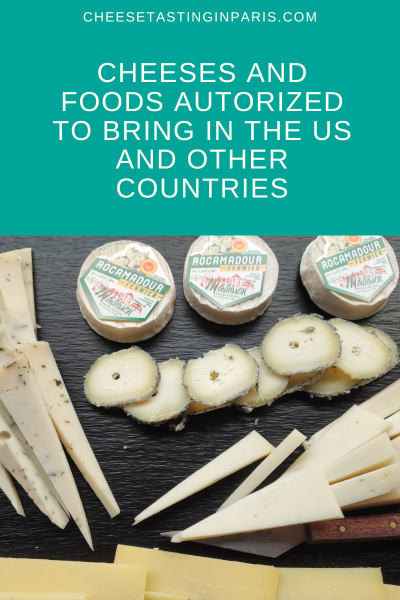You may be wondering what food items you can bring back to the USA?
Cheeses, charcuterie, chocolates. Here are the rules.
My tips to travel back with your cheeses :
- Ask for the receipt at the shop with the cheese names for the ones travelling to the US.
- At the cheese store and before packing cheese in your luggage, consider whether you can get it home in good conditions. Hard cheeses travel better than soft ones and even better in your checked-in luggage because it’s cool underneath the plane. Hard cheese might sweat a bit with warm temperatures but you will just to put back in the fridge back home.
- Cheese shops can vacuum pack for you. It will avoid the smell in your luggage 🙂 When you’re back home, open the plastic and leave your cheese wrapped up in its paper in the fridge.
- Creamy cheeses are difficult to travel with.
- If you only have a carry on, keep in mind that the creamy cheeses can be considered as a liquid. Hard cheeses might be a better option.
European countries
You can travel with the food you want.
Australia
Sorry but you can’t bring artisan raw milk cheese.
Are authorized: coffee and tea, chocolate, meat products are authorized if they are industrially produced and sterilized.
Cheeses, butter and dairy products are allowed if they are in industrial commercial packaging. So it’s of no interest, sorry.
Alcohol is authorized within the limit of 2.25 L per person.
Canada
20kg of cheese is allowed.
20kg of meats in a sealed container (glass, can).
Charcuterie, butter, honey are prohibited.
Rest of foods are OK.
Lastest updated information here.
UK
You can bring in the following for personal use:
- dairy
- fish
- meat (there are restrictions if you’re bringing in more than 2kgs of pork or pork products)
- honey
- bread, but not sandwiches filled with meat or dairy products
- biscuits
- chocolate
Check the lastest updates.
USA
The Animal and Plant Health Inspection Service invites you to declare all agricultural products on their U.S. Customs forms. U.S. inspectors have the authority to make a final determination about whether your products can enter the country. We recommend that you keep receipts and original packaging of agricultural products as proof of their country of origin.
Here are a list of food products you can or can not bring through US customs.
Authorized cheeses to bring into the USA
Pressed and cooked cheeses are allowed :
- Comté
- Emmental
- Raclette
- Beaufort
- Cantal
- and butter
It’s a good idea to keep your receipt to show the cheeses’ names at the customs.
Cheeses not allowed
Unauthorized cheeses are cheeses made from raw milk, soft and unpasteurized. All raw milk cheeses that have not aged for at least 60 days will also be prohibited.
- Brie
- Camembert de Normandie
- Epoisses non pasteurized
- Reblochon
- Mimolette
- Saint Nectaire
- Roquefort
- Raw goat cheese from the Loire Valley (grey goat cheeses)
Authorized foods
- 1 liter of alcohol per person over 21
- Pâté and foie gras cooked in an airtight container to be stored at room temperature (cans and glass jars)
- Fresh and dried mushrooms: only the aerial parts, clean, without traces of soil
- Condiments: vegetable oils, vinegar, mustard
- Groceries: jams, honey, chocolate, coffee, tea
Unauthorized foods
- Fresh meats
- Charcuterie (cured meats)
- Canned beef
- Bouillon cubes made from meat other than poultry or pork
- Powdered soups containing meat other than poultry
This information only covers food (fruit, cheese, meat, etc.) entering the United States in the passenger baggage for personal use.
According to the FDA, you must declare all food products. Failure to declare food products can result in up to $10,000 in fines and penalties.
Travelers may bring back milk or dairy products from countries without FMD if they have official documentation to prove the product’s country of origin. The following items are considered official documentation: package label; written documentation; proof of travel (passport or travel itinerary); origin of flight; receipt of sale; CBP document (based on the officer’s interview of the traveler); a meat inspection certificate; or certificate of origin.
Rules are subject to change : Check the US Customs and Border Protection (CBP) website
You want to pin it ?





